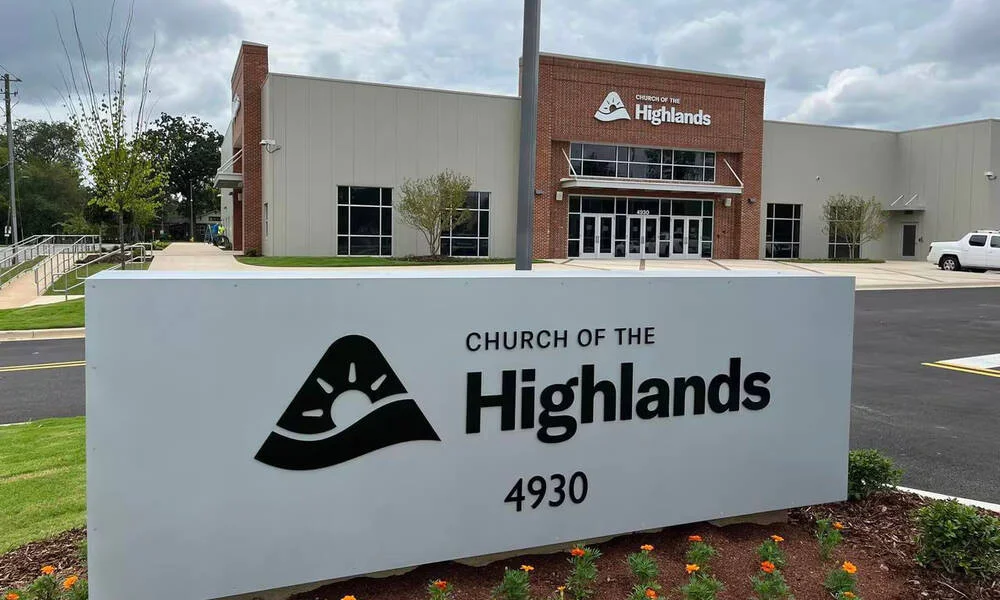Church of the Highlands Exposed
The Church of the Highlands, based in Alabama, stands as one of the largest and most influential megachurches in the United States. Over the years, it has experienced exponential growth, attracting tens of thousands of members to its services and expanding its reach both physically and digitally. However, with its rise to prominence comes an increasing amount of scrutiny. This article explores the many layers of the Church of the Highlands—its history, leadership, operations, controversies, and its future.
1. History and Background
Founded in 2001 by Pastor Chris Hodges, the Church of the Highlands began as a small congregation with a vision to create a welcoming, modern church experience. Over time, it expanded rapidly, now boasting more than 20 campuses across Alabama and drawing over 60,000 weekly attendees. The church’s focus on dynamic worship, practical teachings, and strong community programs has made it a leading force within the evangelical movement.
2. Beliefs and Doctrines
The Church of the Highlands is non-denominational, aligning with mainstream evangelical beliefs. They emphasize a personal relationship with Jesus Christ, biblical teaching, and the role of the Holy Spirit in guiding believers. Their doctrine also focuses on serving others through outreach, which is central to their mission. Unlike some megachurches, they steer clear of controversial topics like prosperity gospel but instead concentrate on the importance of practical Christian living.
3. Leadership and Governance
Pastor Chris Hodges serves as the senior pastor and face of the church, but the Church of the Highlands is governed by a board of elders and a larger leadership team. This governance structure is intended to ensure accountability and provide strategic oversight. Despite this, questions have been raised about the true level of transparency in leadership decisions and church operations, a point of critique we’ll discuss later.
4. Financial Transparency
As with many megachurches, the Church of the Highlands has faced calls for greater financial transparency. Despite its vast resources, there are concerns about how the church handles donations and whether its finances are appropriately disclosed to the public and congregation. While the church maintains that it complies with financial regulations, some watchdog groups have flagged the need for clearer reports regarding its multi-million-dollar income and spending patterns.
5. Community Involvement
The Church of the Highlands prides itself on its extensive community outreach programs. Through initiatives like Highlands College, which trains future ministry leaders, and its numerous Serve Days, the church fosters a culture of giving back. They are heavily involved in local projects, from food drives to disaster relief, and claim to be deeply committed to improving the communities they serve.
6. Controversies and Criticisms
Despite its positive community work, the Church of the Highlands has not been immune to controversy. One of the most significant criticisms came in 2020, when Pastor Chris Hodges was accused of racial insensitivity after liking politically charged social media posts. This incident led to backlash and the church temporarily losing its partnership with the Birmingham Housing Authority. Critics argue that this highlighted a disconnect between the church’s leadership and the diverse community it serves. Additionally, questions have been raised about the church’s stance on LGBTQ+ issues, which remain conservative despite its progressive outreach efforts.
7. Media Coverage
The media has largely portrayed the Church of the Highlands as a powerful religious institution with both tremendous influence and occasional controversy. Coverage has ranged from highlighting the church’s growth and community impact to investigating its leadership scandals and financial practices. Local and national news outlets have frequently reported on its rapid expansion and increasing political involvement in Alabama.
8. Legal Issues
While the Church of the Highlands has largely avoided major legal issues, it has been involved in several smaller legal disputes over property acquisitions and tax exemptions. Critics claim the church’s immense growth and land purchases have raised concerns about zoning regulations and the tax-exempt status of certain properties.
9. Educational Programs
A standout feature of the church is Highlands College, which offers programs in ministry leadership and prepares students for service in the church or broader community. Highlands College has grown in stature and influence, with graduates going on to lead churches, non-profits, and missions. However, some have raised concerns about the insular nature of the training, which is heavily influenced by the church’s specific theology and leadership style.
10. Membership and Demographics
The Church of the Highlands attracts a predominantly white, middle-class congregation, although they have made efforts to diversify. With their welcoming approach, they’ve managed to grow a varied demographic, especially among young families and millennials. Their use of modern worship styles and social media marketing has helped them appeal to younger generations in particular.
11. Cultural Influence
The Church of the Highlands is not just a religious institution—it is a cultural force. Through its media presence, worship albums, and extensive involvement in Christian conferences, it has shaped the landscape of modern evangelical Christianity. Its emphasis on community service, leadership training, and technology-driven ministry has been emulated by other churches nationwide.
12. Comparisons with Other Megachurches
Compared to other large American megachurches like Lakewood Church (led by Joel Osteen) or Saddleback Church (founded by Rick Warren), the Church of the Highlands is distinct in its approach to growth. While Lakewood is known for its prosperity gospel teachings and Saddleback for its focus on mental health and purpose-driven life, the Church of the Highlands places heavy emphasis on local outreach, community engagement, and discipleship through small groups and leadership development programs.
13. Future Prospects
Looking ahead, the future of the Church of the Highlands appears bright, with continued expansion on the horizon. They have plans to open additional campuses and further develop their educational programs. However, with growth comes the challenge of maintaining transparency, accountability, and connection to their ever-expanding congregation. How they address ongoing criticism regarding race, inclusivity, and financial transparency will likely shape their future trajectory.
Conclusion
The Church of the Highlands has undoubtedly left a significant mark on the religious landscape, especially in the southeastern United States. Through its large-scale outreach, educational programs, and commitment to modern Christian practices, it continues to grow and influence. However, the controversies surrounding its leadership and governance highlight the complexities faced by megachurches operating at such a large scale. As the church moves forward, how it balances growth with accountability will be a key factor in its long-term sustainability and public perception.
FAQs
Q: What denomination is the Church of the Highlands?
A: The Church of the Highlands is a non-denominational evangelical church.
Q: How many campuses does the Church of the Highlands have?
A: As of 2024, the church has over 20 campuses across Alabama.
Q: Who is the senior pastor of the Church of the Highlands?
A: The senior pastor is Chris Hodges, who founded the church in 2001.
Q: What controversies has the Church of the Highlands faced?
A: Some of the major controversies include accusations of racial insensitivity and questions about financial transparency and inclusivity, particularly regarding the LGBTQ+ community.







